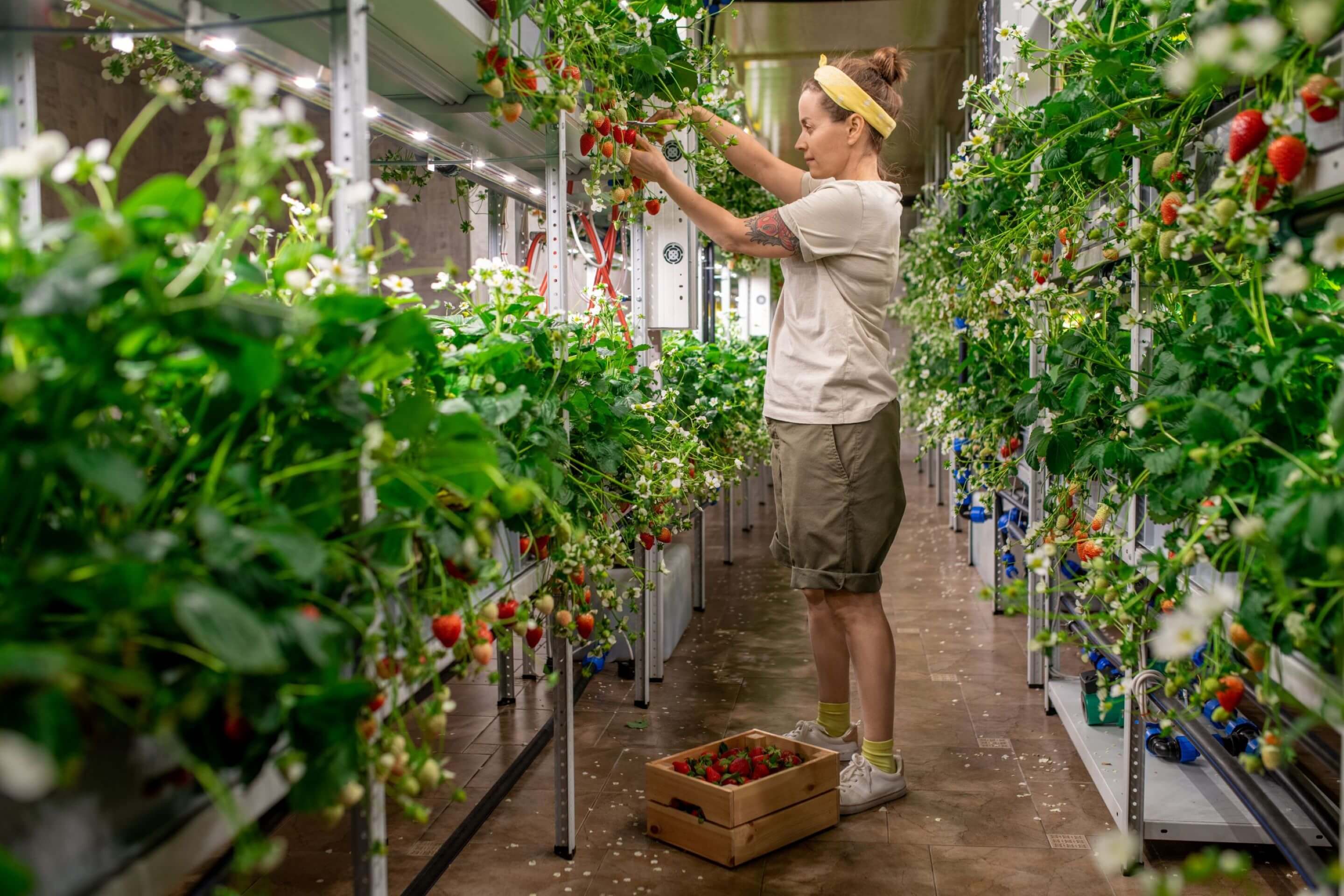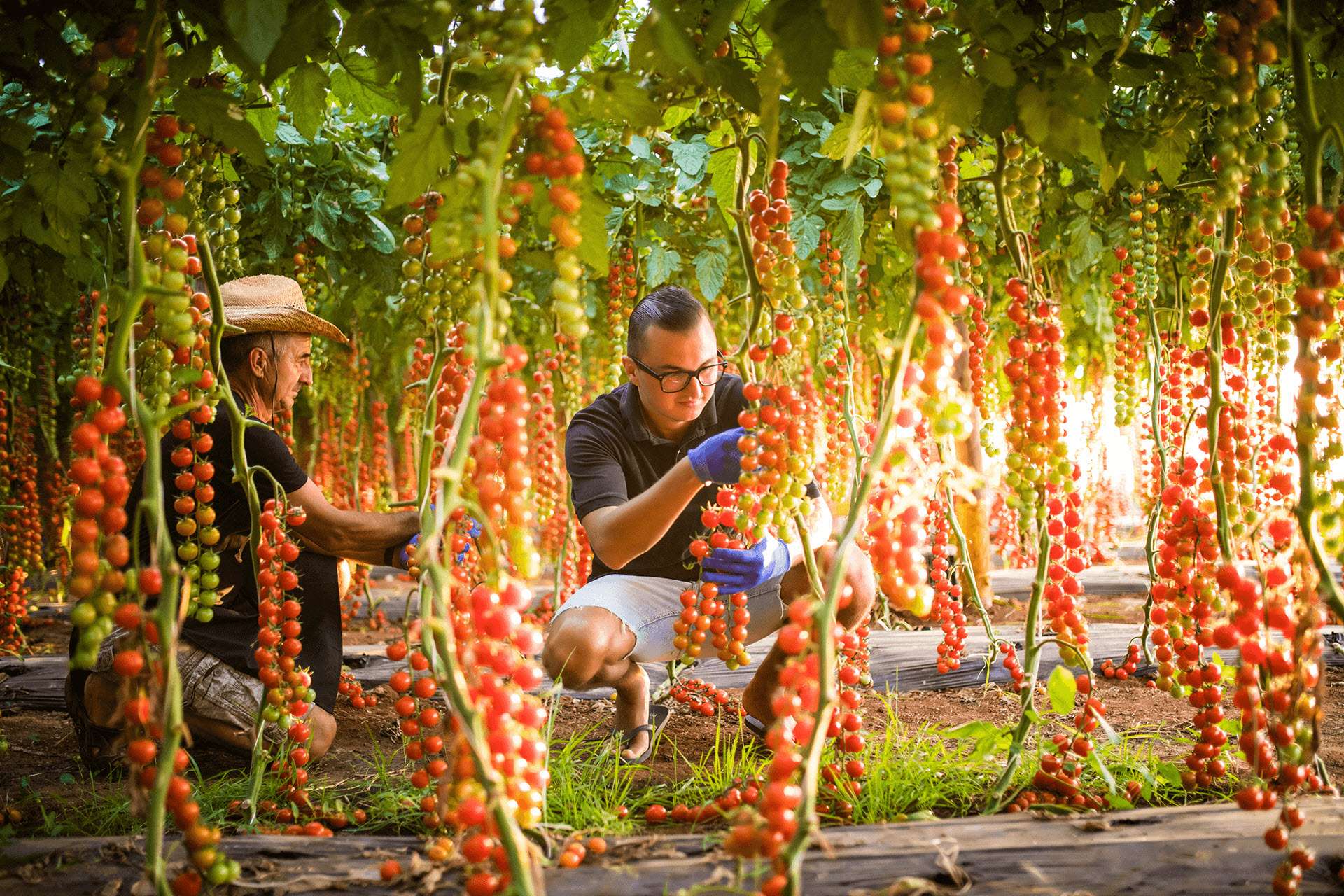Vertical farming to boost urban sustainability
Our world is increasingly urban. Over 56% of people live in cities, which keep getting larger. In the next 30 years, the world population could rise by roughly 2 billion, reaching a staggering 9.7 billion people by 2050. Virtually all this population growth is expected to take place in urban areas.
Add in climate change, which puts enormous stress on production systems, and we face a major challenge to provide food for everyone.
Rethinking food production to be more resilient and sustainable, particularly in the context of cities, is necessary. This means finding resource-efficient ways of producing food:
- using less space when possible
- reducing the consumption of water
- shortening the distance food travels to reach our plates
Although no single solution is sufficient, farming techniques that innovate to optimize resources offer important clues. One such technique is urban vertical farming.
What Is Vertical Farming?
In contrast to traditional horizontal farming, vertical farming is a method in which crops are grown on top of each other. Thus, vertical farming saves space and allows for more plants to be grown per square foot.

Imagine a tray filled to the brim with luscious green lettuce. That tray is stacked in a tower of similar trays, and the tower is housed in a closed space. Artificial lighting is suspended upon each tray, helping the greens thrive. You are picturing a vertical farm.
Growing food in sunless interiors may seem counterintuitive, but in many ways it is highly efficient.
Thanks to an array of LED lights, temperature controls, ventilation and irrigation systems, these farms create controlled environments that closely monitor crops, optimize the user of water, and keep the pests out.
The specifics vary. Some farms rely on hydroponics: plants grow without soil, suspended in a nutrient-rich solution. Others, such as Future Gaïa, use geoponics: plants do grow on living soil, and an automated system efficiently provides light, water, and nutrients.
Some vertical farms grow in buildings designed to that end; others use repurposed spaces. Freight Farms uses shipping containers which can grow fresh produce throughout the year, regardless of geographic location.
Futura Gaïa
High-tech geoponic farms.
Freight Farms
Agriculture anywhere.
What Are the Advantages of Vertical Farming?
There are 4 main benefits of vertical farming:
- Space savings
- Sustainable production
- Food security
- More diversity and efficiency than regular agriculture
Urban vertical farms require less space
More greens can grow on less land. By stacking on top of one another, crops can flourish at a far higher density than they would in traditional farming.
This efficient use of land makes vertical agriculture well suited to urban areas, where space comes at a premium.
Local agriculture is more sustainable and ecological
In the city-state of Singapore, a large majority of food is imported. Producers such as Sustenir Agriculture offer vegetables grown in repurposed office spaces. They calculate their product results in 92% lower carbon emissions compared to imported greens.
In China, the world’s largest agricultural producer and consumer, the city of Shanghai is also striving to be more self-sufficient in its food production. In 2017, the city commissioned a 100-hectare project to turn a whole neighborhood into an urban farming area, including vertical farms.
Moreover, in a context of global warming, growing food in vertical farms means that crops will not be subject to droughts, storms, or sudden temperature changes, ensuring better production in a much smaller space.
The use of controlled environments in vertical farming can also eliminate the use for pesticides, yielding high-quality fruits and vegetables. Finally, by automating irrigation and recycling water, some systems claim to use 95% less water compared to conventional agriculture.
Vertical agriculture is safer
In a context of global warming, growing food in vertical farms means that crops will not be subject to droughts, storms, or sudden temperature changes, ensuring better production in a much smaller space.
The use of controlled environments in vertical farming can also eliminate the use for pesticides, yielding high-quality fruits and vegetables.
Controlled Environment Agriculture is more efficient
CEA (Controlled Environment Agriculture) is a type of agriculture that can be controlled and manipulated to adapt and meet the specific needs of certain plants. Smart vertical farms make it possible to grow multiple type of plants in the same environment by:
- Regulating the temperature
- Varying humidity
- Varying lighting needs
What is the difference between urban farming and vertical farming?
Here are the major differences and commonalities between urban agriculture and vertical agriculture in terms of environmental and sustainability:
| Urban Farming | Vertical Farming | |
|---|---|---|
| Space | Any farming structure in a city: space constraints due to urbanization. | Occupies less ground space but requires infrastructures to grow vertically. |
| Water | Depending on the set up, variable needs for water. | Optimized water usage. |
| GHG Emissions | Relatively low GHG emissions (Greenhouse Gas Emissions) | |
| Food Miles | Proximity between producers and consumers: short distance delivery. | |
| Yield | Low due to restricted spaces. | High thanks to optimized use of vertical space. |
Improving Urban Vertical Farming
On its own, vertical farming cannot tackle all the challenges cities face in establishing a sustainable and resilient food supply chain. Vertical farms still use electricity on a much larger scale than conventional farming, most of it to power artificial lighting. They also require a more complex array of materials, from the housing structure to the various nuts and bolts for irrigation, airing and monitoring.
As technology makes progress, some of these aspects can be improved. Lighting, for example, can consume less electricity and be powered by clean energy. The various parts of the infrastructure can also be designed to be repairable and recyclable, thus limiting their impact on the environment.
Depending on the context, vertical farming may not make environmental and economic sense for every urban area, but by producing food closer to where it is eaten, and optimizing space and resources, vertical farming technologies can help drive innovation to make cities more sustainable and self-sufficient.
